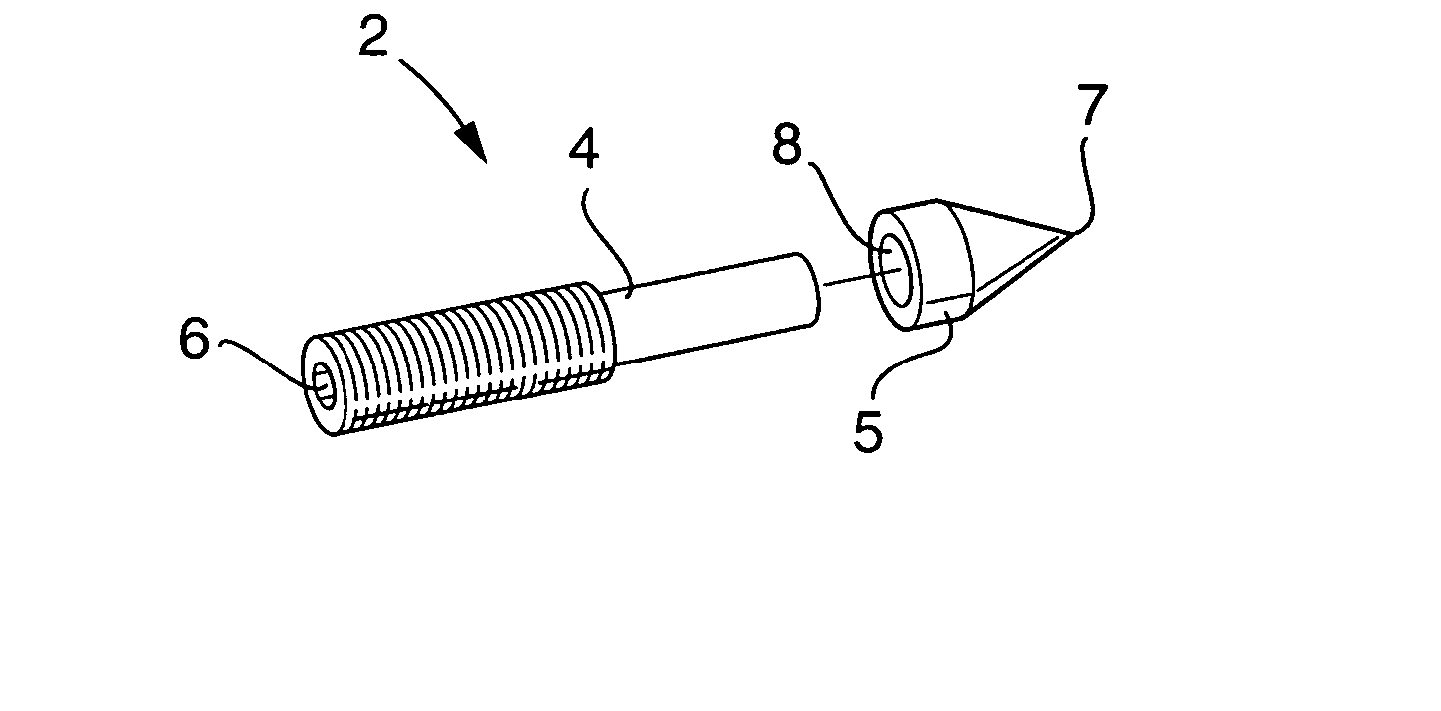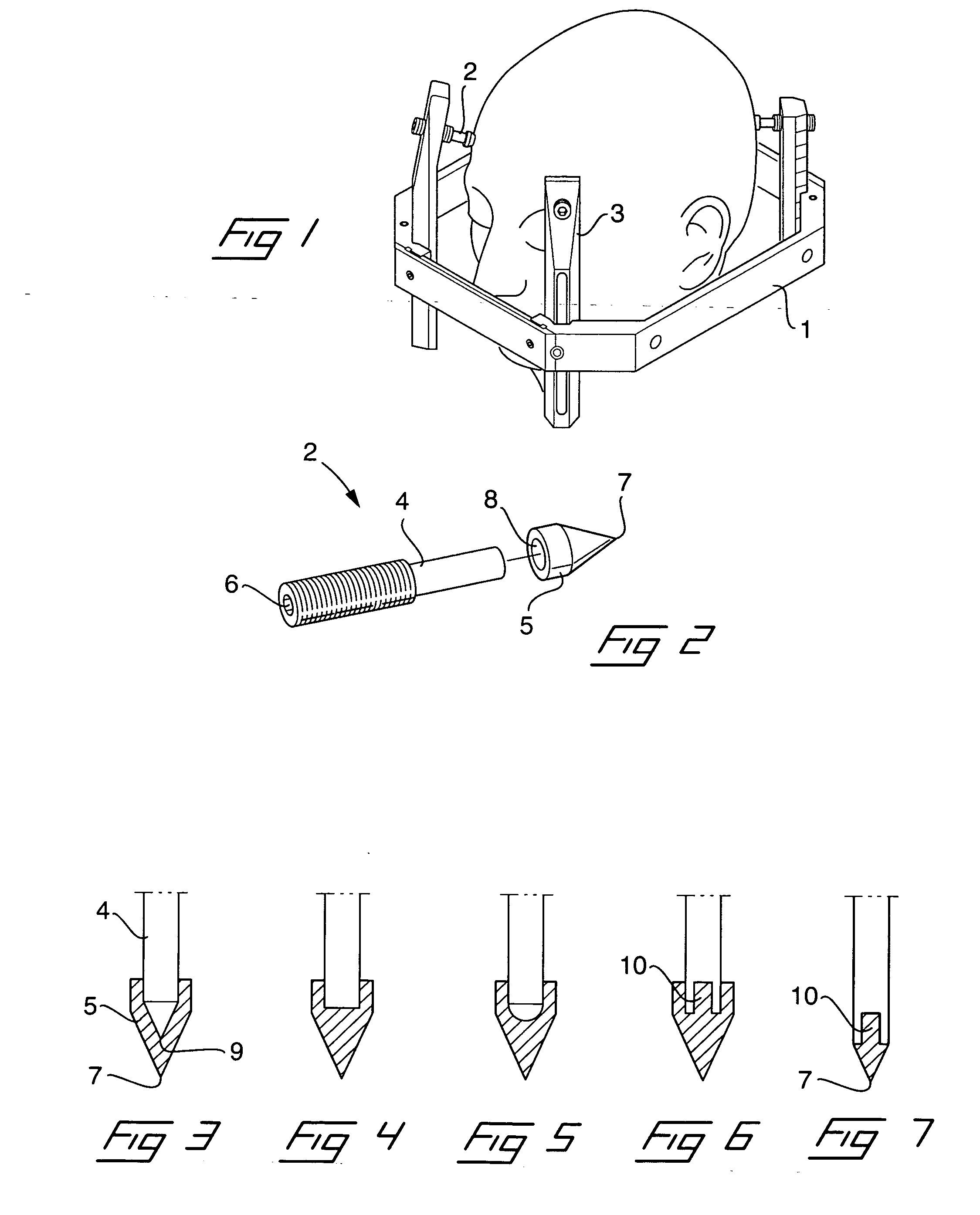Adapter, a fixation pin and a method for fixation of a supporting structure to a body part
a technology of fixing pins and supporting structures, applied in the field of adapters, fixing pins and fixing methods, can solve the problems of today's fixing pins, burn injuries of patients, artefact or distortion problems of images or attenuation of signals, etc., and achieve the effect of reducing the total cost of manufacturing
- Summary
- Abstract
- Description
- Claims
- Application Information
AI Technical Summary
Benefits of technology
Problems solved by technology
Method used
Image
Examples
Embodiment Construction
[0028] In FIG. 1 is shown an example of a supporting structure attached to a body part. In this case the supporting structure is a so called stereotactic frame 1, which is attached to a head of a patient by means of four fixation pins 2, of which only three is visible in the drawing. The stereotactic frame 1 is ring shaped and has four upward directed posts 3, which are adjustable in relation to the frame 1. In the upper end of each post 3, a fixation pin 2 is screwed into a threaded hole in the post such that a sharp-pointed tip of each fixation pin penetrates a small distance into the tissue and the skull and rigidly attaches the frame to the head.
[0029]FIG. 2 shows an exploded perspective view of an exemplary embodiment of a fixation pin 2 according to the invention. The fixation pin comprises a shank portion 4 and an adapter 5, of which the latter is detachable mountable to an inner end of the shank portion. As can be seen, the shank portion 4, in this embodiment, is formed wit...
PUM
 Login to View More
Login to View More Abstract
Description
Claims
Application Information
 Login to View More
Login to View More - R&D
- Intellectual Property
- Life Sciences
- Materials
- Tech Scout
- Unparalleled Data Quality
- Higher Quality Content
- 60% Fewer Hallucinations
Browse by: Latest US Patents, China's latest patents, Technical Efficacy Thesaurus, Application Domain, Technology Topic, Popular Technical Reports.
© 2025 PatSnap. All rights reserved.Legal|Privacy policy|Modern Slavery Act Transparency Statement|Sitemap|About US| Contact US: help@patsnap.com


